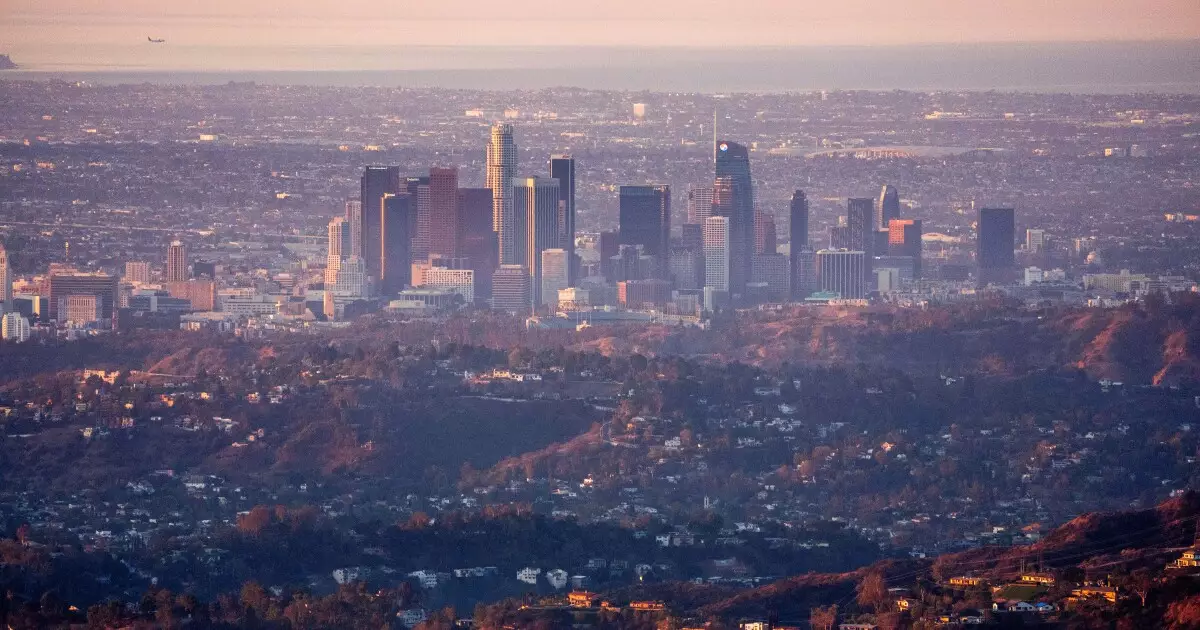In recent years, the destructive power of wildfires has transcended the immediate devastation and begun infiltrating the realm of finance. A groundbreaking academic study unearthed a stark reality: climate-induced wildfire risks are now being reflected in the bond markets, subtly yet significantly raising the borrowing costs for school districts. This revelation is more than just a statistical curiosity; it exposes how climate hysteria is distorting economic realities, compelling taxpayers and investors alike to shoulder costs that should otherwise be the domain of responsible fiscal planning.
What’s particularly intriguing—and alarming—is the degree to which wildfire risks are already being capitalized into municipal bonds. A one standard deviation surge in projected wildfire threat causes primary market bond spreads to increase by over 14 basis points and secondary market spreads by nearly twice that. These figures, representing over 40% of the average sample mean, point to a troubling trend: climate risk is no longer distant or abstract but an immediate factor in financial decision-making. Municipalities traditionally shielded from market forces are now being priced—unfounded or not—against the backdrop of a warming climate that threatens to drive costs skyward.
The study’s scope is comprehensive, analyzing hundreds of thousands of bonds over two decades in some of the most fire-prone regions of the United States. The fact that these risks are already impacting borrowing costs indicates policymakers are ignoring the looming fiscal storm because they either dismiss climate science or are too paralyzed by political inertia to act decisively. Either way, the message is clear: climate change is no longer a distant threat but an active destabilizer of municipal finances.
Wildfires as a Weapon Against Local Economies and Responsible Governance
Wildfires, fueled by climate change, are not just environmental disasters—they are strategic vulnerabilities. When a well-placed fire devastates a community, the economic fallout doesn’t just stop at the burnt trees or charred homes; it spills into the bonds that underpin municipal budgets. The increased bond spreads seen in the study underscore a hidden vulnerability: investors are demanding higher yields to offset the perceived risks of future fires, especially in communities with high minority populations and limited local revenue sources.
This evolving risk profile threatens to entrench economic disparities. Marginalized communities, often located in fire-prone areas, find themselves saddled with higher borrowing costs—costs that will inevitably trickle down to residents through higher taxes or cuts in vital public services. Meanwhile, responsible governance—focused on foresight and adaptation—is sidelined by political hesitation and short-termism. If our municipal leaders refuse to prioritize resilient infrastructure and proactive mitigation, taxpayers will end up footing the bill, not just for firefighting but for ever-increasing bond premiums that drain municipal budgets.
Furthermore, wildfires reveal a disturbing complacency in our policy approach. The federal government’s potential dismantling of agencies like FEMA, responsible for disaster preparedness and response, will only exacerbate the financial vulnerabilities of these communities. Investors foresee this shift, pricing the risks accordingly, which creates a vicious cycle of economic destabilization driven more by policy neglect than by natural conditions.
Market Realities and the Illusion of Climate Certainty
It’s worth recognizing that market reactions—such as widening bond spreads—are often driven by climate anxiety rather than hard evidence of future disasters. Critics like Erika Smull argue that comprehensive studies across the nation have yet to conclusively prove a risk premium exists uniformly. However, the recent volatility surrounding the Los Angeles water bonds after the Palisades fire indicates that market sentiment is increasingly sensitive to climate events, even if quantitative models are slow to catch up.
What this signals is a paradigm shift: investor psychology is beginning to recognize climate risks as integral to creditworthiness, even if policymakers remain hesitant. This realignment of perceptions, albeit volatile, is arguably a healthy recalibration that could push governments toward adopting sensible resilience measures. Yet, the current climate narrative still leans heavily toward fear-mongering and alarmism, often ignoring the nuance of responsible risk management that balances investment with innovation.
The notion that climate risk can be dismissed as merely another externality is dangerously outdated. As wildfire seasons extend and intensify, the economic costs will accelerate, and the market will have no choice but to incorporate these risks into bond pricing. The challenge lies in leadership—both political and financial—to ensure these costs are managed prudently rather than allowed to spiral into uncontrollable fiscal crises.
The Uncomfortable Truth: Climate Costs Are Economically Disruptive
Wildfires are more than natural disasters—they are economic catalysts that threaten to destabilize local governments and, by extension, the broader economy. The direct costs—like the $30 billion burned in 2018—are staggering on their own, but the indirect costs, reflected through higher borrowing costs and compromised fiscal health, are perhaps even more insidious.
Rather than dismissing these risks or dismissing climate change as an abstract concern, policymakers should focus on adaptive measures that align fiscal responsibility with climate resilience. Bonds specifically designed for wildfire adaptation—akin to catastrophic bonds—could serve as useful tools, allowing communities to finance necessary infrastructure improvements and hazard mitigation initiatives. However, the reluctance or inertia of those in power to act proactively leaves communities vulnerable to the cyclical nature of wildfire damage and the financial fallout that follows.
As the economic costs mount, so too does the need for a pragmatic, center-right approach that prioritizes fiscal discipline while recognizing the undeniable reality of climate change. Ignoring mounting wildfire risks while continuing to rely on outdated, reactive policies will only deepen our fiscal scars and widen inequality, ensuring that the costs are borne not by the responsible but by those least able to absorb them.
In essence, the market’s silent recalibration of wildfire risks exposes a broader failure: our system is unprepared for the true economic consequences of climate change, and unless we act with urgency and responsibility, the fallout will be felt not just in forests and homes, but in our very wallets.


Leave a Reply